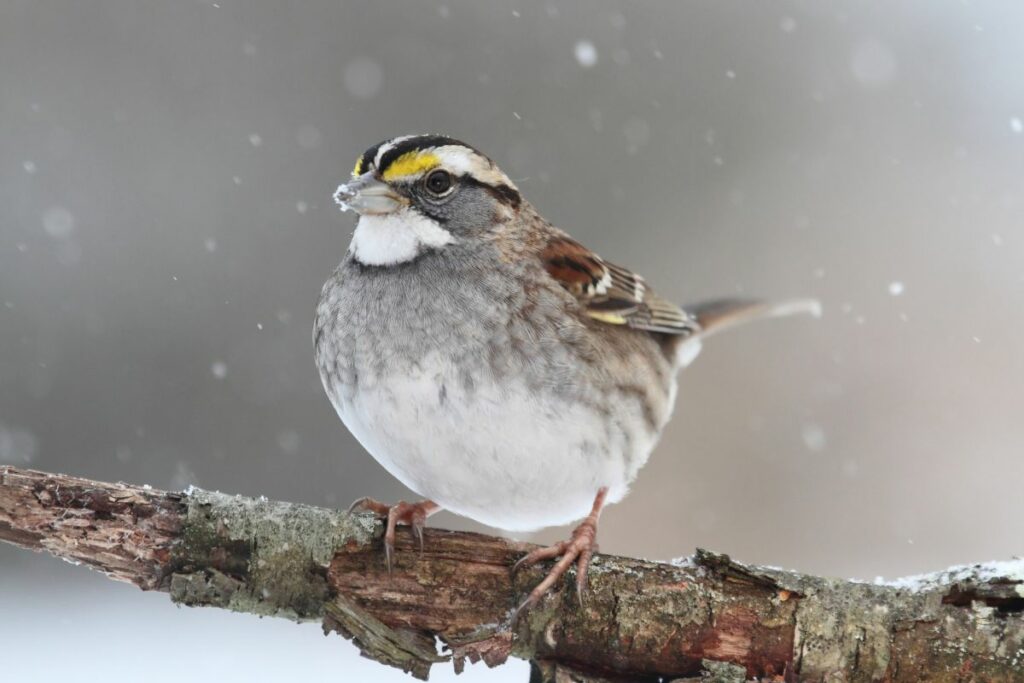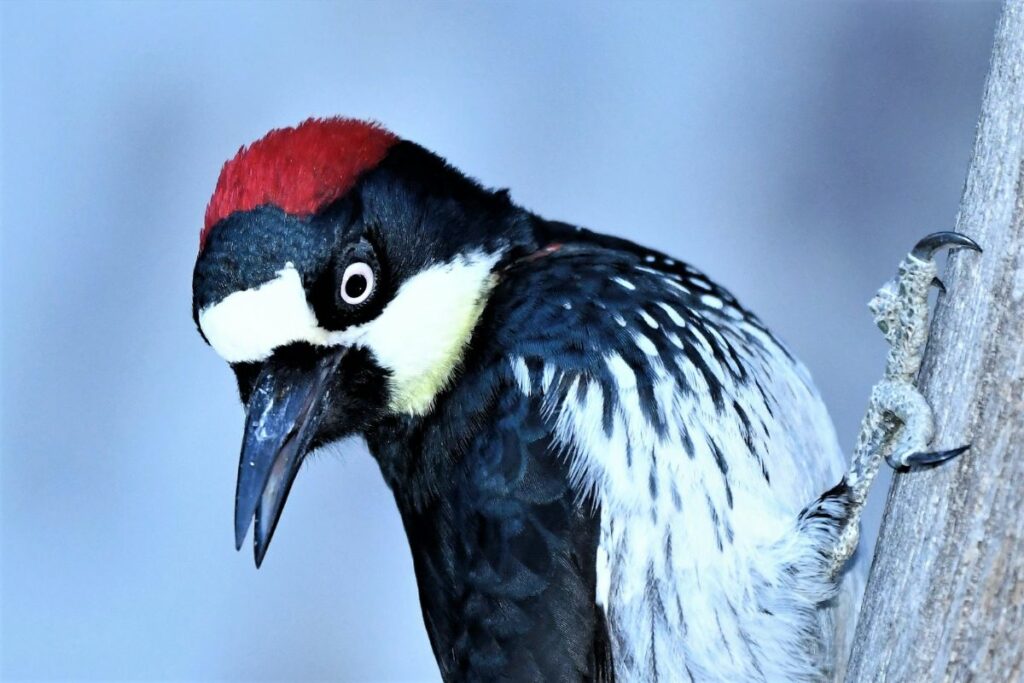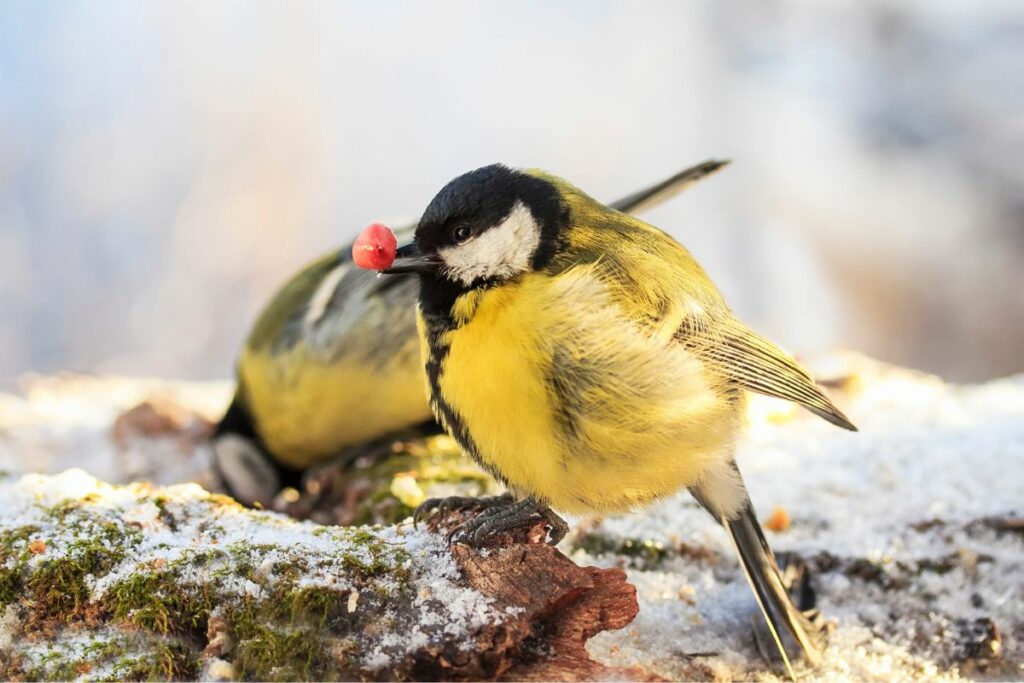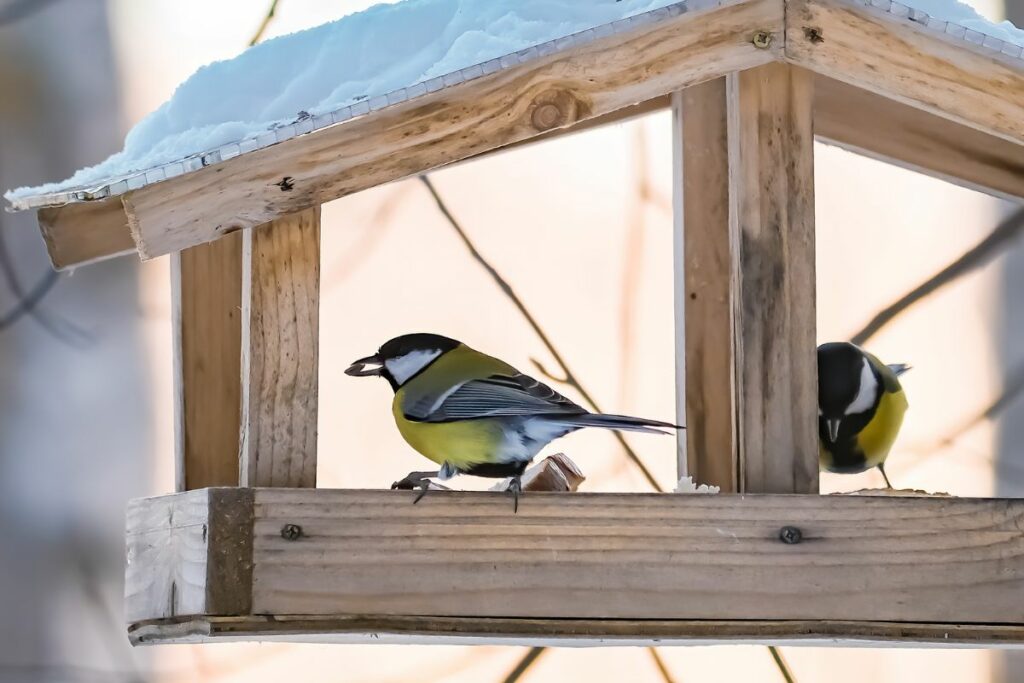As an Amazon Associate, we earn from qualifying purchases with no additional costs for you.
Birds eat a variety of different foods that are available where they live. In many regions of the world, food availability fluctuates seasonally. This is because plants also produce seeds and fruits on a seasonal basis. Similarly, insects and invertebrates are more active in some months and less active in others.
The food that wild birds eat in the winter is determined by the birds’ natural habitat. Most birds can still find insects to eat and rely on all types of winter berries to sustain themselves through the season. Birds in warmer, or sub-tropic climates have an abundance of food in winter.
Many birds eat berries in winter or use food that they have stored during the rest of the year. The other option if food is scarce is to migrate south. Waterfowl fly south in the winter in search of open water where there is food available.
Read on to learn more about the assortment of food choices birds make in winter and what species cache food.
TIP: If you want to check out the best pair of binoculars for bird watching, we recommend a pair of waterproof and fog-proof 8 x 42 binoculars like the Celestron – Outland X 8×42 Binoculars (Amazon link).
What Do Wild Birds Eat In The Winter?
The level of food availability and types of food around in winter vary depending on where the birds live. Winter in the southern states of the United States is not as harsh as in the northern states, so it is likely easier for birds to find insects still.
Birds found further north in North America may be more limited in terms of food in winter. However, there may still be some insects around, and there are many types of berries in winter that birds rely on for food. Some examples of berries that birds eat include elderberry, mountain ash, and hawthorn.
In areas where the climate is milder in winter, such as in the subtropics, the birds can still find insects to eat. They will also take advantage of berries and other winter fruits in the area.
Should You Feed Wild Birds?
There is debate over if feeding wild birds is a good idea. Artificial feeders can have a negative effect in some cases, especially if not kept clean because diseases can be spread through the feeders from one bird to another.
It is also a bad idea to feed birds that are showing a drop in population numbers, as this may interfere with their ability to breed.
On the other hand, putting out some food for common species can help them survive in winter. Wild birds may visit feeders that people put out in winter. These feeders often contain seeds, peanuts, and suet. However, not all birds use feeders or occur near people.
What is preferable to feeders is providing plants and trees that produce food for the birds. For instance, plants that produce berries or flowers. Keeping some areas of the garden wild and allowing weeds and grasses to grow and seed, is helpful for many birds.
TIP: Are you looking for high-quality food for wild birds on your backyard? I recommend using Wagner’s products with the highest quality grains used in blending and made in the USA (Amazon links):
– Deluxe Treat Blend Wild Bird Food
– Eastern Regional Wild Bird Food
– Western Regional Wild Bird Food
– Midwest Regional Wild Bird Food
– Southern Regional Wild Bird Food
Which Bird Species Store Food?
Some birds, like the Acorn Woodpecker and Red-breasted Nuthatch, store food, which helps them survive in harsh winter conditions when food is scarce.
The nuthatches cache food under bark, in gaps in trees, or in the ground. Acorn Woodpeckers are well known to store hundreds of acorns in a tree. They carefully manipulate the acorns to fit in snugly, and they guard the area from intruders looking to steal their food.
Blue Jays also cache food. They usually store nuts and seeds in the soil so that they have a supply of food when food is scarce. This is helpful for the plants because if the bird forgets to retrieve the seeds or nuts, new plants will grow.
Crows are also birds that are recorded as storing food. They cache food under the soil and in trees. They may even store pieces of animal prey in various places.
This ensures that the birds have food available in times of food scarcity. Crows are omnivorous, feeding on a variety of foods, including seeds, berries, invertebrates, and even small mammals and birds.
Some other birds that are known to store food are the titmice and chickadees. These little birds will visit feeders and collect peanuts and seeds. They also eat insects, which they actively forage for.
Why Birds May Change Their Diet In Winter
There are often fewer foods around in the environment in winter. Seeds and fruits may not be easy to find. The lower temperatures also mean that birds need to increase their caloric intake, making it important that they find enough food.
It is, therefore, important that they switch to foods that are found in the habitat during every part of the year.
It is important to remember that birds are endothermic animals. In other words, they have to generate body heat by their metabolism.
This is the opposite of ectothermic animals like reptiles, which take up heat from the environment. In winter, reptiles hibernate, and, in doing so, reduce their metabolism and need for regular food intake.
Birds do not hibernate and need to survive the cold winters. It is, thus, essential that the birds eat enough to keep their bodies warm and functioning properly during the cold winter months.
Food Availability And Migration
Some bird species overcome the problem of reduced food availability by migrating. When it becomes too cold in the north, birds migrate further south to where conditions are milder. Waterfowl in North America mainly migrate south during winter.
Some birds, like the Snow Geese, migrate south and congregate in the thousands on lakes and impoundments where they can find food.
There is less food available for waterfowl up north because lakes and dams often freeze over. This means it is hard for the birds to find open water where they can search for invertebrates, fish, and the water plants that they feed on. Migration is a good solution for many birds, allowing them to escape freezing temperatures and the lack of food.
Conclusion
Wild birds often switch their diet during winter or increase the number of berries they eat. This is in response to the colder temperatures and lower availability of certain foods, such as insects.
Some birds store food to help them survive when food is scarce during the colder temperatures of winter. Other birds migrate south to escape the cold and to find richer feeding grounds.
TIP: Knowing how to spot the birds in your yard is key to enjoying visits from your winged friends as much as possible! The best sources are trusted books, I recommend using the following (Amazon links):
– National Geographic Field Guide to the Birds of North America
– National Audubon Society Birds of North America




